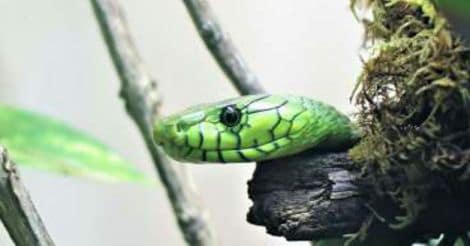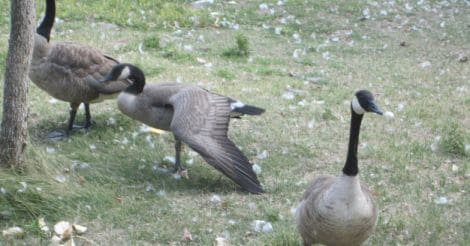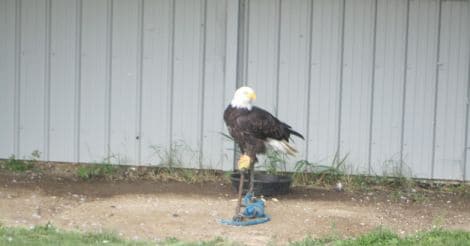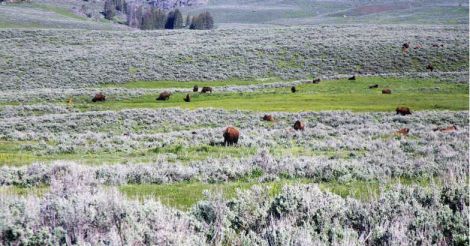Captive breeding is an important approach now to return endangered species back to their wild habitats. It has been one of the most successful approaches that have been able to remove several wildlife species out of their threatened or endangered conservation status to a stable population dynamics along with repopulation of their former range or distribution. There has however been instances, when a particular threatened species has been recovered through captive breeding and restocked into their wild habitats; and again been impacted by the ground conditions to be returned back to their endangered status due to relentless poaching and related anthropogenic activities or their inability to survive in the wild.
 Photo: Rahul Ray
Photo: Rahul RayFor example in case of India while some successes have been achieved with respect to captive breeding and release into the wild program for some vulture species, smaller species of wild cats, gharials, fresh and salt water crocodiles; but, at the same time the reintroduction of red panda or snow leopards back into their natural habitats generated through captive breeding approaches have not been so successful. There is not much data available if the released individuals have been successful in adapting to their natural environment, hunt, forage and breed successfully with their wild relatives and survived in the wild. None the less the approach must be commended for it’s global role in conservation of several wildlife species across all the major continents and varied ecosystems.
 Photo: Rahul Ray
Photo: Rahul RayIt is important to therefore to supplement such captive breeding approaches with other available options to make the return of the wild more successful in terms of numbers. If we take a closer look at the distribution of several species across South and South East Asia; where the region share similar ecosystems and natural habitats across international boundaries, we will notice that for a particular species there is over population and crowding in some parts of the range; while complete absence in other suitable or historical range. The case in point could be the Indian peafowl (commonly referred to as ‘peacock’) that has reached huge numbers in various Indian states to an extent that they are now often being regarded as pests of crops.
 Photo: Nandana Das
Photo: Nandana DasSimilar is the case of over population of the blue bull (nilgai) in several western, northern and eastern Indian states. Recently a controversy erupted as some of the state governments stated employing professional hunters to cull these species to bring their unrestricted population under control and avoid sever crop damages. However, neighboring Bangladesh had historical populations of such species but are currently extinct in that country. If there is a joint mechanism of relocating and exchanging wildlife stock breeding populations among adjacent nations in South and South East Asia; like a Joint Conservation Initiative (JCI); that can greatly help in relocating excess populations of blue peafowl and nilgai in suitable habitats in Bangladesh rather than mercilessly culling them. Both nations could benefit from such joint conservation efforts through relocation and reintroduction approaches in addition to captive breeding. It will save money for the captive breeding program and help to target more species that are currently threatened and endangered and needs immediate attention.
 Photo: Saikat Kumar Basu
Photo: Saikat Kumar BasuGreen peafowl was once well distributed across India’s remote North Eastern states and is not found in the wild any more. However, the species exist in isolated pockets in parts of South East Asia like Myanmar, Thailand, Cambodia, Vietnam, peninsular Malaysia and Java (Indonesia). An exchange captive breeding program between India and South East Asian nations could help bring back this majestic species to its original North East Indian habitats through approaches like Joint Conservation Initiative (JCI). Reintroduction of one horned Indian rhinoceros in south China, parts of India (outside Assam and West Bengal), Nepal, Bhutan, Bangladesh and Myanmar could work great if these nations join hands in exchanging breeding stocks and establishing new captive breeding programs. Red panda and snow leopard international conservation efforts among Asian nations included under SAARC and ASEAN memberships could prove to be extremely successful and beneficial if the nations in the region join hands in conservation through captive breeding and reintroduction or relocation programs.
 Photo: Saikat Kumar Basu
Photo: Saikat Kumar BasuBoth the Indus dolphin in Pakistan and the Gangetic dolphin in India are two distinct sub species of the South Asian freshwater/river dolphin that have been reported to be endangered in their wild habitats due to anthropogenic activities. If both India and Pakistan could establish a joint study or captive breeding and reintrioduction program for the river dolphins; both nations could learn from each other and support one another in the conservation program. The gharial conservation program in India and Nepal could also benefit like this more comprehensively; if both nations join hands to protect these endangered species.
If the Indo-Nepal initiative is successful, then gharials could be reintroduced under new captive breeding programs in Pakistan, Bangladesh and Myanmar where it has become extinct in the wild. In the past an excellent model exchange program for Asiatic cheetahs from Iran and Asiatic lions from India between the two nations have been stalled due to cheap politics and lack of serious initiatives. However, currently Iran, China and several Central Asian nations are attempting to fill in the void space of long extinct Caspian tiger with Siberian tigers in excellent collaborations with Russia. New breeding programs have been established for the purpose and they are showing great promises for the future.
 Photo: Srimoyi Mazumder
Photo: Srimoyi MazumderNumerous such small but coordinated initiates among neighboring countries in all the major continents could be greatly beneficial from the perspective of long term conservation efforts. However, these efforts will need political will, trust and strong cooperation between adjacent countries to make them successful. Captive breeding, reintroduction and relocation in the wild are indeed challenging initiatives; however, the opportunities are no less optimistic. What is needed is the will and the enthusiasm to carry this forward with a long term sustainable approach, friendship, coordination and cooperation between the neighbors.
(The author is a Canada and India based freelance journalist specializing in global geo-political, strategic and foreign policy issues, science & technology and environment & conservation related themes.)

























 Photo: Srimoyi Mazumder
Photo: Srimoyi Mazumder